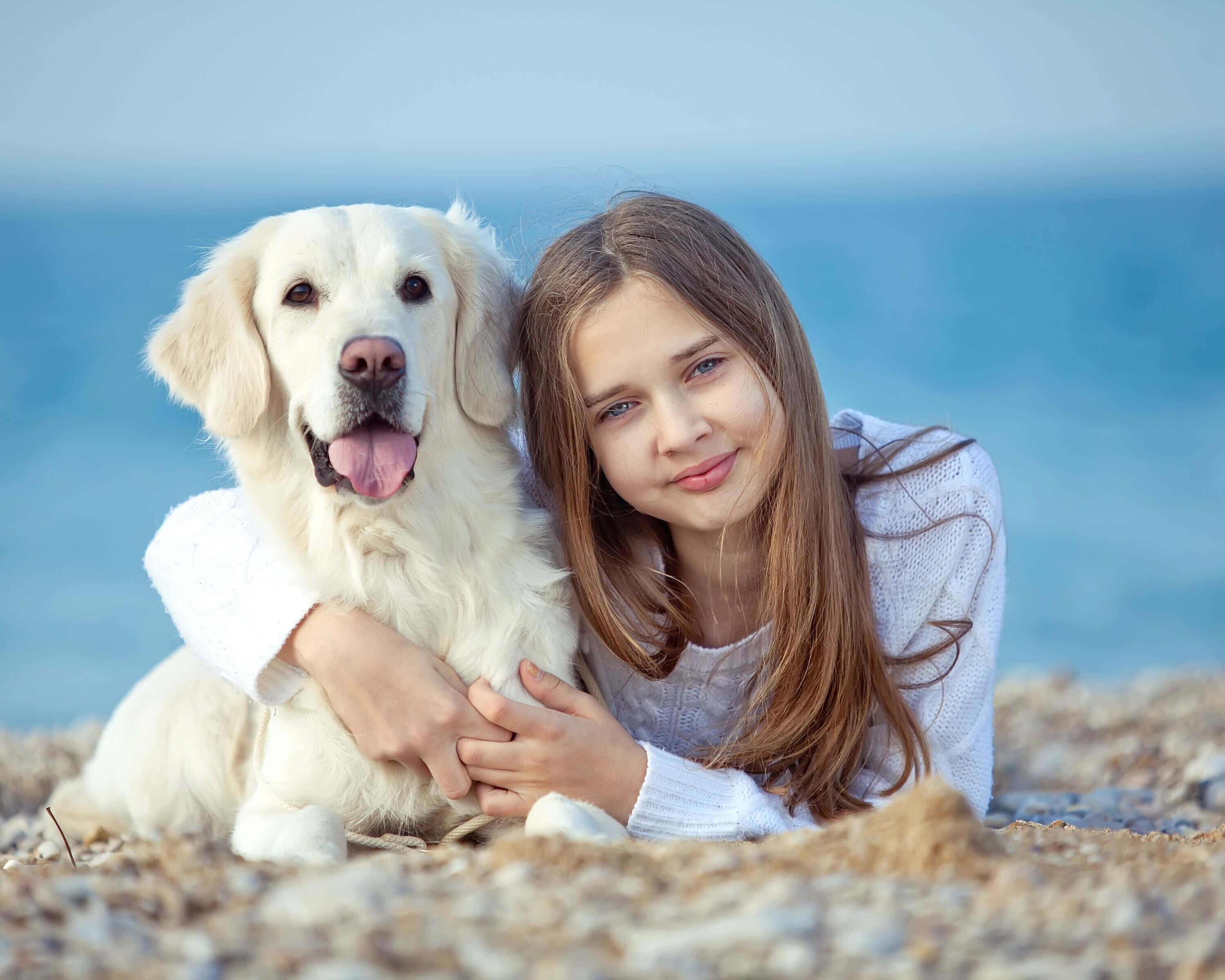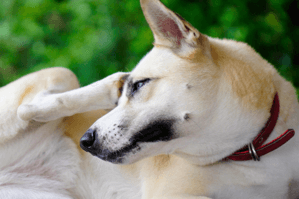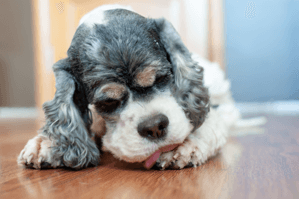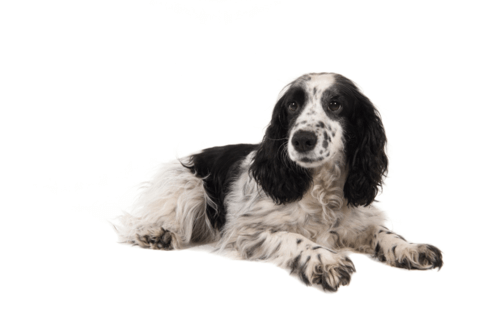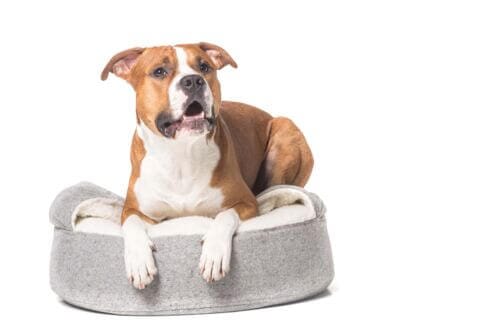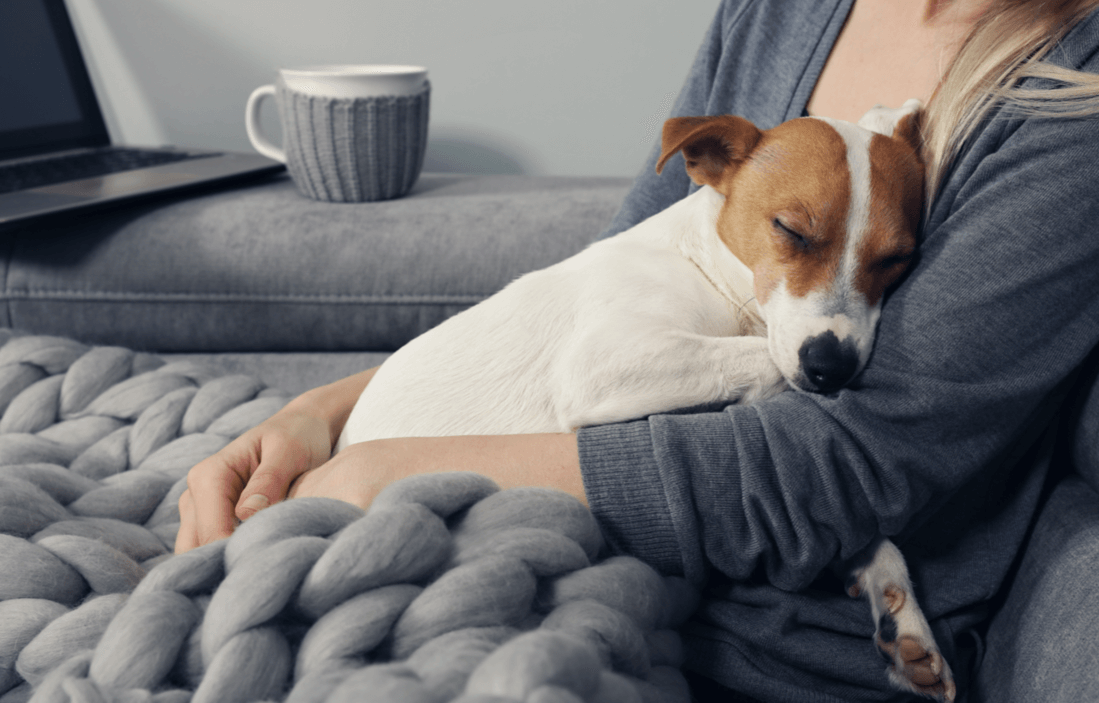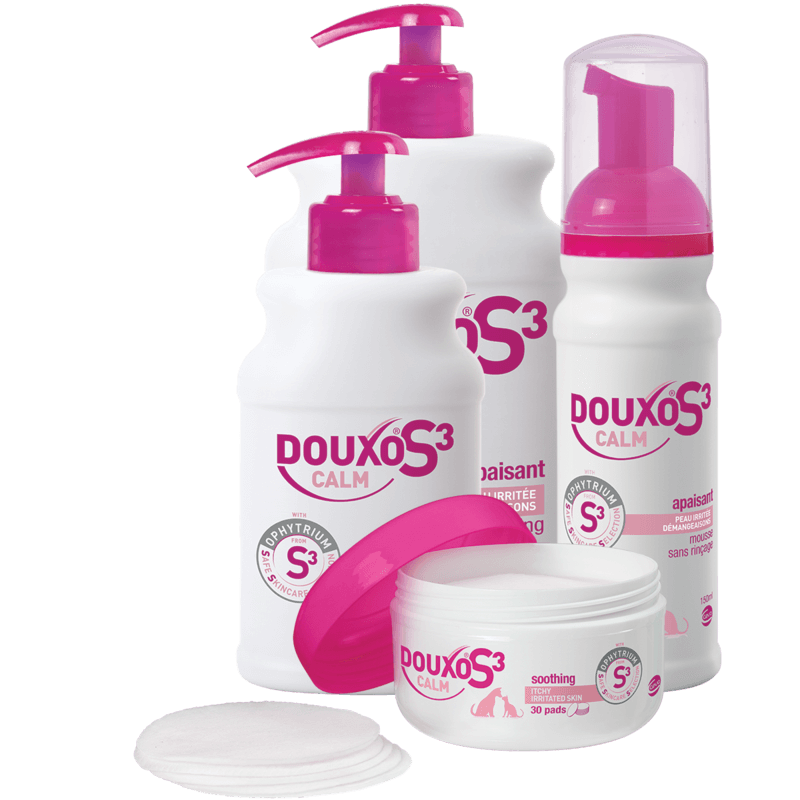Itch relief for dogs
Marina G VeterinarianItching is really a symptom that can alter your dog quality of life. Bringing your dog quick relief is of major importance to improve your dog comfort.
If your dog has itchy skin, then you know about it! Keeping you awake at night with the constant thumping of the back leg as they scratch; futilely trying to relieve the itch. It can drive both of you mad.
So, it is important to recognise your dog is suffering from pruritis (itchy skin) and provide itch relief as soon as possible.
Is itch on dogs serious?
It depends. It depends notably on the cause of course, but also the intensity and frequency of itch manifestations. Some dogs will present with occasional, not very intense itch whereas others can spend their time scratch or lick, preventing them from playing and even sleeping. What a nightmare for your dog and as a consequence for you. Although one of the main signs of itchy skin is, of course, scratching, it’s true that relieving an itch can manifest in other ways than scratching alone. You may notice your dog:
- Overgrooming, excessively licking or even biting at an area
- Rubbing their body on surfaces for those hard-to-reach places
- Head shaking
- Scouting
The irritation can become so frustrating that they just can’t stop scratching and will often cause more serious damage. The skin can become secondarily infected as dogs really have absolutely no concept of modern hygiene; they are more than happy to lick a wound clean with a mouth full of bacteria.
Cause of itch absolutely needs to be investigated as if the cause is not under control, it will reoccur, and your dog’s quality of life will be affected. The most common cause for dog’s itch is fleas, so you can begin investigations by checking carefully your dog’s fur and check when you gave your furry friend the last preventative treatment. To rule out all the causes of itchy skin, it is important to seek advice from your veterinarian. Main causes include external parasites (not only fleas), skin infections (bacterial or yeast) and allergies. Treatment will of course depend on the cause.
What can you put on your dog to relieve itching?
Itch is not a specific sign from one disease ; many different skin conditions can lead to itch, and some like skin infections won’t respond very well to only soothing measures. That is why addressing the cause is a major component of itch treatment. We recommend you consult your vet to identify the cause ; in any case, if the signs don’t improve or worsen after a week or two after beginning a product, we prompt you to seek medical advice. That said, it is important to soothe itchy, irritated skin and this can be achieved with products from 2 main categories: topical non-drug products and medications.
Topical solutions to ease itchy skin and strengthen the skin barrier ecosystem
Topical solutions are essential to soothe rapidly itchy, sensitive, irritated skin, bringing ingredients directly to where they are needed. Shampoos can be used to cleanse the area, removing dirt, debris and allergens. Other formulations such as Mousses then play a valuable part as they are not washed off, meaning the ingredients are in contact with the skin for longer for an optimal performance. For the best results, it’s always good to have a three-pronged attack when dealing with the skin. Not only do we need to soothe and protect the outer layers, especially the epidermis, but we also want to nourish and strengthen the skin so it can do its job as the body’s main protector and restore the balance of the protective microbiota for a complete and healthy skin barrier ecosystem. DOUXO® S3 CALM line of products can be valuable in soothing your dog’s skin, while strengthening the damaged skin barrier and preventing adhesion of potentially pathogen bacteria. The line is available in Shampoo, Mousse for whole body application and Pads to aid with all sensitive areas.
In case of skin infection, the recommendation is to use antiseptic products as soothing products won’t allow to eliminate the germs that cause itch (see below).
Medication to reduce itching +/- skin inflammation
These products are available under vet prescription. You may be prescribed topical, oral, injectable or topical medications for your dog to provide immediate relief of symptoms. Depending on the product used, it can take hours to days to soothe your dog’s skin.
Treat the cause to soothe long-term
Once your vet has diagnosed the cause of your dog’s itchy skin you can work with them on a plan of how to treat it.
Effective parasite control
Maintaining regular, preventative parasite control is vital for all dogs to prevent itchy skin, and is even more important to those dogs who are sensitive to flea bites (flea allergy dermatitis). Don’t forget: treating other pets in the household and the environment is key to all-round control.
Allergies
In the case of allergies as the cause of itchy skin, first, you will need to work with your vet to determine the allergen(s). Allergies in dogs fall into three main categories: flea allergies (as discussed above), environmental – known as atopic dermatitis - (e.g., pollen, grass) and food.
With food allergies, once the ingredient your dog is allergic to has been identified through an elimination trial, the key ongoing preventative care involves ensuring your dog only eats a high-quality diet that excludes this ingredient.
In cases of atopic dermatitis, where possible, the allergen should be avoided. In addition to this, treatment aims to relieve the itch, prevent further skin inflammation and make the body tolerate the antigens, as atopic dermatitis in itself cannot be cured.
There are four basic approaches that we can take to manage dog allergies, to be used in combination:
- Avoid the allergens where possible (e.g. frequent cleaning to minimise dust mites, regular preventative flea control, avoiding certain foods or cleaning products)
- Topical approach to bring soothing ingredients where needed
- Drugs to reduce itching and skin inflammation
- Increase immune intolerance
It is important to remember that allergies are a life-long disease and that a treatment that works today may be less efficient tomorrow. It is normal, don't feel discouraged, it is just that treatment regime should be adjusted. Every dog is unique, every dog’s allergies are unique to them too as well as their evolution, so the treatment must be unique too. There is no solution working for every dogs. In any case, using long-term topical products such as DOUXO® S3 CALM line to soothe their skin as part of the multi-modal approach is a great help to control the signs.
Secondary infections
Skin infections (bacterial or fungal) are usually secondary to another condition, that can be cutaneous or from inside the body. Treatment of skin infections rely on four key components:
- Eliminate the germs
- Relieve the pain, itching and inflammation
- Restore the skin barriers
- Manage the underlying cause
Elimination of germs is usually achieved using antiseptic topical products (antibiotics or oral antifungal can be used in case of deep infection or with refractory cases). Second and third points can be achieved with topical products containing soothing and restructuring ingredients. DOUXO® S3 PYO line, available in Shampoo, Mousse and Pads contain chlorhexidine 3% for antibacterial and antifungal efficacy as well as Ophytrium to simultaneously soothe the skin, strengthen the mechanical barrier, limit adhesion of potentially pathogen bacteria.
To avoid reoccurrence of skin infections, it is of major importance to identify and manage the underlying cause. Whilst treatment for skin infection is ongoing, your vet is likely to recommend further treatment to relieve some of your dog’s distress.
How to prevent further damage to the skin
Alongside treating both the inside and outside of the skin, you might find it useful to provide a physical barrier between the skin and the nails. The aim is to prevent the dog from traumatising and further damaging the skin while still satisfying their need to scratch. This can be as simple as using a buster collar to protect the ears, head and neck area if that’s the affected region. Or use a pet shirt to cover and protect the torso and stomach. Baby clothing also works well if you have any handy.
Alternatively, you can protect the skin by making sure the nails are trimmed and kept smooth.
Remember to remove any coverings very frequently (at least twice a day) and check the underlying skin for redness or wetness. You can certainly make a skin condition worse if it is covered and gets wet for any reason, making the perfect environment for yeast and fungus to take hold.
We recommend
Our solution for itchy, irritated ans sensitive skins.
DOUXO S3 CALM soothes itchy, irritated and sensitive skin while balancing skin microbiota which is commonly unbalanced in sensitive skins. It helps to protect the skin barrier ecosystem from allergens and improves skin hydration.
Our solution for skin disinfection - Antibacterial, antifungal
DOUXO® S3 PYO disinfects the skin thanks to the antiseptic action of chlorhexidine while hydrating and strengthening the skin’s ecosystem. Antibacterial and antifungal efficacy.
